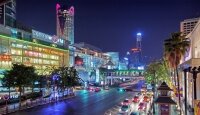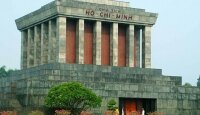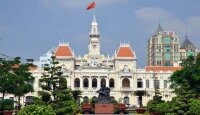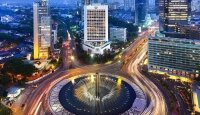|
Asia Business News, Videos
& Market Research

City Profiles
Bangkok
Called Krung Thep Maha Nakhon or simply Krung Thep by the locals, the mesmerizing city of Bangkok is more than a flourishing Southeast Asian metropolis. With its unique cultural heritage and dynamic modern transformation, there is truly no other place like it in the world.
Beijing
The capital of the People’s Republic of China, Beijing is the country’s economic, political, educational, cultural, communication, and international and trade capital. Partially surrounded by the Hebei Province, close to the Tianjin port city, and situated in northern China, Beijing is considered the country’s most significant port of entry and transportation hub.
Busan
Located within South Korea's largest industrial area, "The Southeast Economic Zone" (which includes Busan, Ulsan and South Gyeongsang Province), Busan is the cultural, educational and economic center of the region. It is the largest port city in South Korea and the world's fifth busiest seaport by cargo tonnage. The most densely built up areas of the city are situated in a number of narrow valleys between the Nakdong River and the Suyeong River, with mountains separating most of the districts. Administratively, it is designated as a Metropolitan City.
Can Tho
Can Tho, a city directly under the Central authorities, lies in the heart of the Mekong River Delta. More than 100 years ago, the city was dubbed “the capital city of the Southwestern Vietnam” and has now become the level-1 city. Can Tho is one of the four provinces and cities of the Mekong River Delta Key Economic Zone – the fourth key economic zone of Vietnam.
Cebu
Cebu is an island province of the Philippines located in the Central Visayas (Region VII) and consists of the main island and 167 surrounding islands and islets. Its capital is Cebu City, the oldest city and first capital of the Philippines, which is politically independent from the provincial government. Cebu City forms part of the Cebu Metropolitan Area together with four neighboring cities and eight other local government units. Mactan-Cebu International Airport, located in Mactan Island, is the second busiest airport in the Philippines.
Da Nang
Da Nang is the third largest city in Vietnam in terms of urban population and one of the major port cities, in addition to Ho Chi Minh City and Hai Phong. Situated on the coast of the Eastern Sea, at the opening end of the Han River, it is the biggest city in Central Vietnam.
Fukuoka
Situated in the northern part of Kyushu, the southernmost of Japan's four main islands, Fukuoka Prefecture has a unique local culture and cuisine that has developed over its long history. Its proximity to China and the Korean Peninsula has made it a gateway between Japan and the rest of Asia and a vital transportation hub to Northeast Asia, China and Southeast Asia. Among its historic attractions are the ruins of Dazaifu, an ancient government office, while the many small islands lying off the coast further captivate visitors. Fukuoka is also renowned for its fresh seafood and many street-side food stalls.
Guangzhou
Guangzhou, also known as Canton, a prosperous metropolis full of vigor, is the capital city of Guangdong Province located along the south coastline of China. Being an excellent port on the Pearl River navigable to the South China Sea, and with fast accessibility to Hong Kong and Macau, the city serves as the political, economic, scientific, educational and cultural center in Guangdong area.
Hai Phong
The capital of the People’s Republic of China, Beijing is the country’s economic, political, educational, cultural, communication, and international and trade capital. Partially surrounded by the Hebei Province, close to the Tianjin port city, and situated in northern China, Beijing is considered the country’s most significant port of entry and transportation hub.
Hangzhou
Hangzhou is the capital and most populous city of Zhejiang Province in east China. It sits at the head of Hangzhou Bay, which separates Shanghai and Ningbo. Hangzhou grew to prominence as the southern terminus of the Grand Canal and has been one of the most renowned and prosperous cities in China for much of the last millennium, due in part to its beautiful natural scenery. The city's West Lake is its best-known attraction.
Hanoi
The City of Hanoi stands tall as the political and economic hub of Reunified Vietnam in 1976. Hanoi outpaced Hue, once the Imperial capital during the Nguyen Dynasty from 1802 to 1945. It was also chosen as the capital during occupation of the French from 1002 to 1954. Its rise from “obscurity” was rewarded with recognition from the global community when it became the capital of reunified Vietnam in 1976, after the long 1955-1975 Vietnam war.
Ho Chi Minh
Ho Chi Minh City, Vietnam’s main economic center, is not only known as a business hub but also as a main tourist destination. The place attracts thousands of businessmen and backpackers alike who are all drawn to the beautiful blend of old and new captured perfectly by this bustling metropolis.
Hong Kong
Hong Kong, with its expansive skyline and deep harbor is located on the southern coast of China within the Pearl River Delta. Hong Kong is currently a Special Administrative Region of the People’s Republic of China, and is a leading international financial center known for its free-wheeling market economy, business-friendly taxes, and one of the highest per capita incomes in the world.
Jakarta
It is often overlooked that Indonesia is the fourth most populous nation in the world, and the sprawling capital of Jakarta is a fitting testament to this reality. Located on the island of Java, Jakarta today is the largest urban center in Southeast Asia, with more than 10 million people living in the city limits and twice as many in the surrounding areas. Aptly nicknamed the “Big Durian,” this steamy, sweltering, jam-packed conurbation is the cultural, economic, and administrative center of the country.
- Prev
- Next >>






























